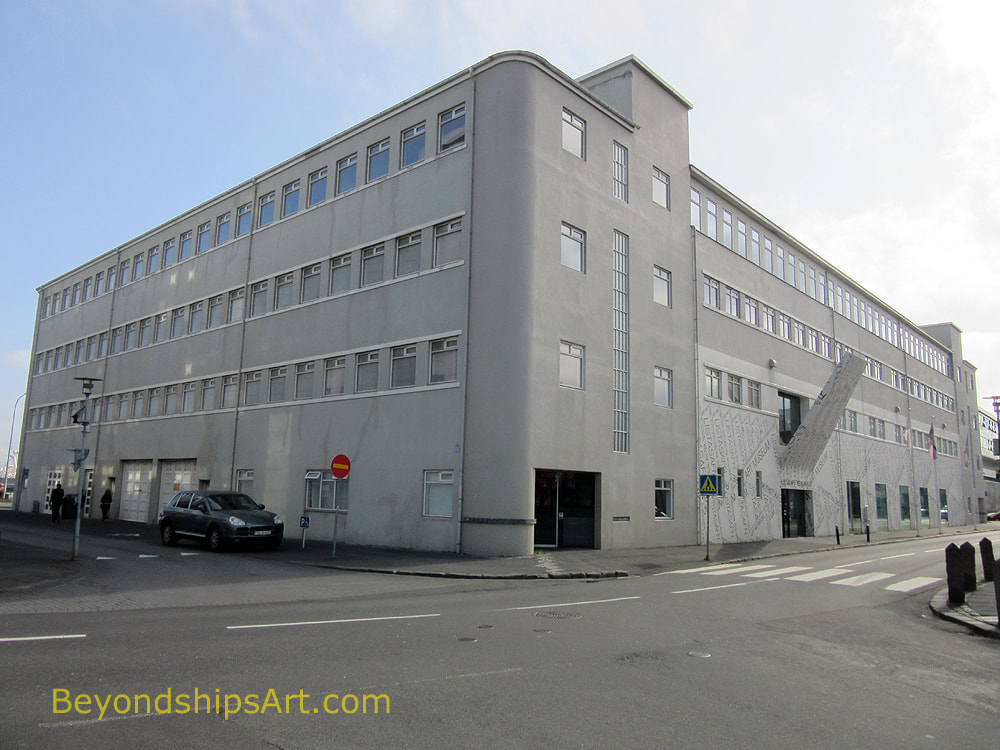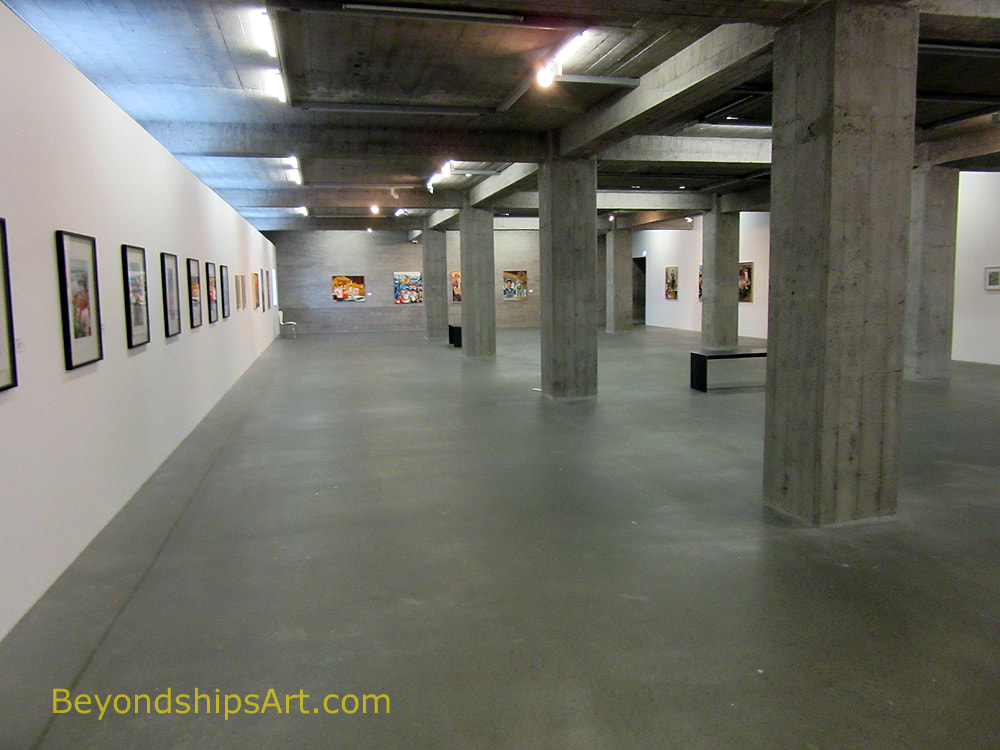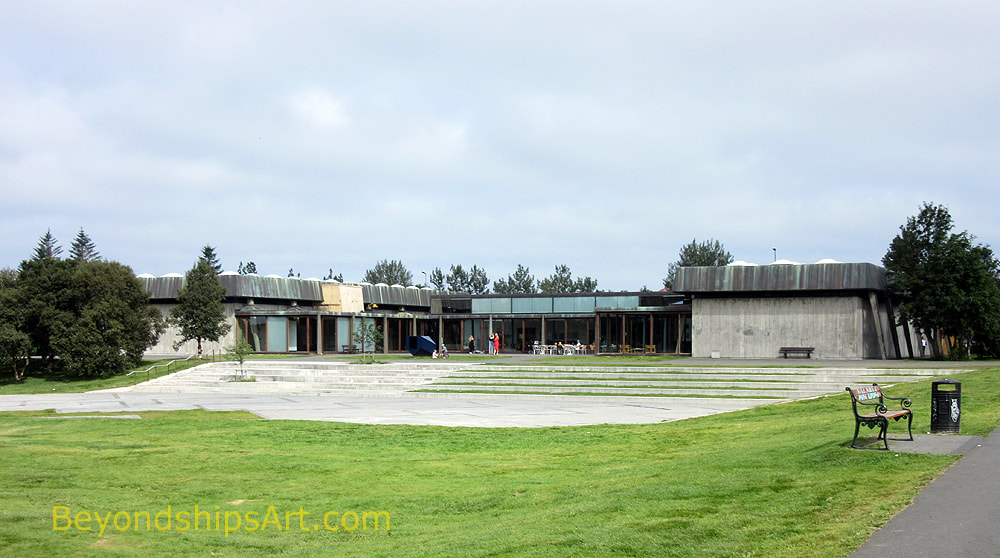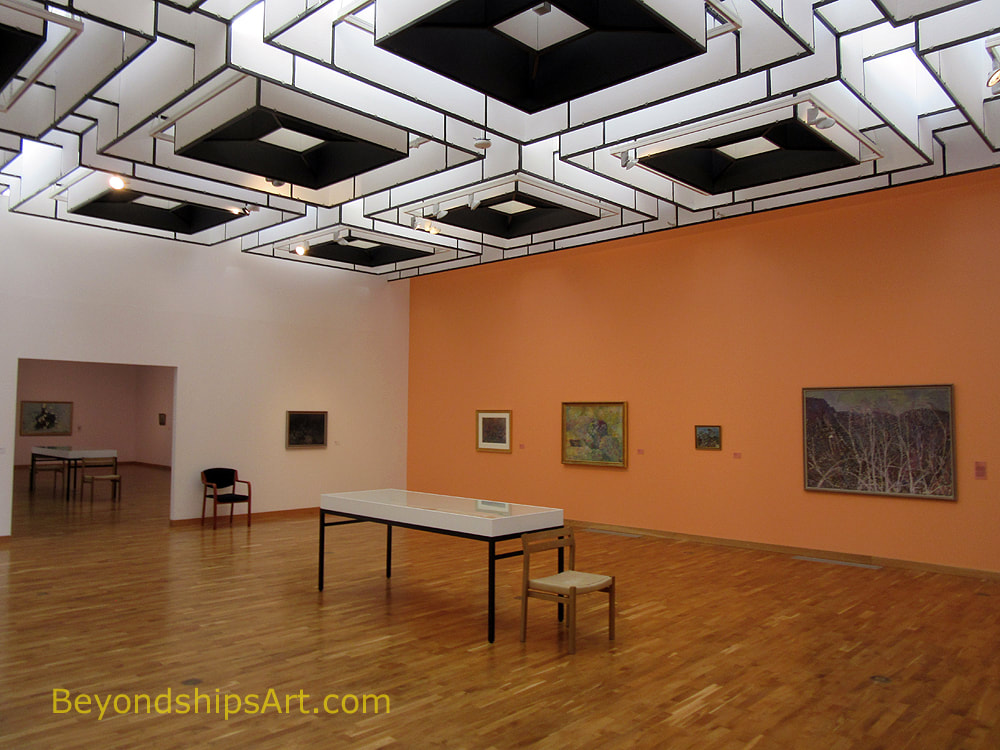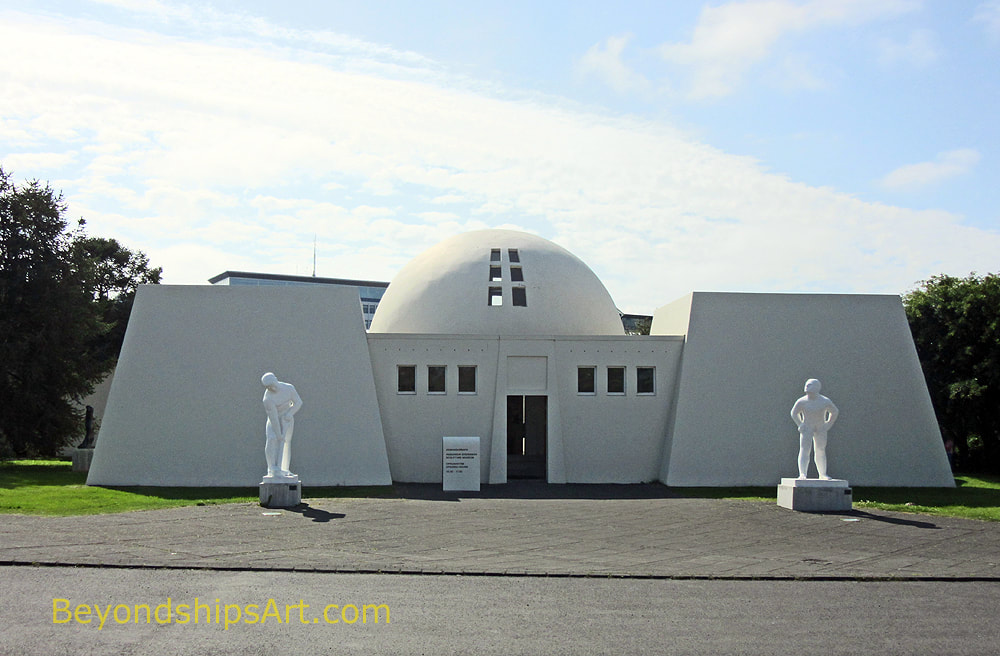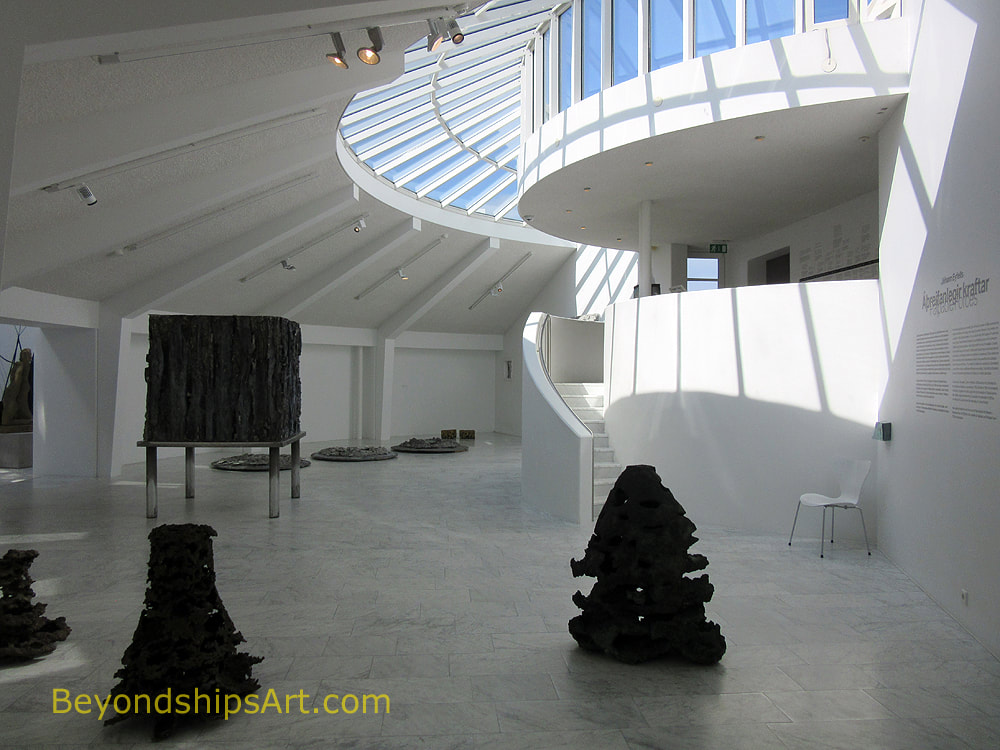|
The Reykjavik Art Museum focuses on contemporary and modern art by Icelandic and international artists. It supervises the City of Reykjavik's art collection, which includes not only works in the museum but also works in public buildings and public areas.
The museum has three locations in central Reykjavik. Each one has a different focus. Hafnarhus stands in the oldest part of Reykavik. It stands on reclaimed land in the Old Harbour. The museum is not far from Iceland's parliament building and the Reykjavik City Hall. Designed by Sigurdar Gudmundson in the Modernist International style and constructed between 1933 and 1939, the Hafnarhus was originally offices and a warehouse for the Port of Reykjavik. It was re-designed by the architectural firm Studio Grandi in the late 1990s and re-opened as part of the Reykjavik Art Museum in 2000. Although re-designed, the building still has an industrial look. However, it has six galleries, which are state-of-the-art museum quality exhibition spaces. This branch of the museum has a progressive exhibition program of temporary exhibitions featuring key Icelandic artists, established artists and emerging artists. It is also the home of a large collection of works by the artist Erro. There is a cafe and a shop in this branch. Kjarvalsstaðir is in Reykjavik's Klambratún Park, which is in a mainly residential area. Opening in 1973, it was the first building in Iceland built for the public exhibition of art. Designed by Hannes Kr. Davíðsson, the building is in the Nordic Modernist style with raw concrete walls and unpainted wood. Laid out in a U-shape with two wings connected by a corridor, the building largely presents unbroken walls to the city. However, floor-to-ceiling glass walls look out to a courtyard and to the park beyond. The galleries are in the two wings. Movable dividing walls give the museum flexibility as to the number and size of the galleries. Works, particularly three-dimensional works, are sometimes shown in the corridors that lay outside of the galleries. Kjarvalsstaðir features works by Icelandic artist Jóhannes S. Kjarval. Indeed, this branch of the museum was conceived of with Kjarval in mind and he participated in its groundbreaking ceremony. In addition to showing pieces from the museum's large collection of Kjarval's work, it also presents temporary exhibitions focusing primarily on modern artists. There is a restaurant and a shop in this branch. Ásmundarsafn, the Ásmundur Sveinsson Sculpture Museum, was the home and studio of sculptor Asmundur Sveinnson. It is at Sigtún, just west of Laugardalur, in an area marked by international hotels and corporate headquarters. The building was designed and constructed by Sveinsson in three stages in the 1940s and 50s. In the first stage, Sveinsson creates a concrete dome structure inspired by Greek and Turkish Mediterraean vernacular buildings. He then added the “Pyramid” wing and finally “The Shed,” a U-shaped building that expanded his studio area. It is an unconventional building. When Sveinsson died in 1982, he bequeathed a large number of works to the City of Reykjavik along with the building. It was decided to turn the building into a museum and to create a sculpture gardens surrounding it. Part of the Reykjavik Art Museum, this branch displays works from the museum's Sveinsson collection. In addition, this branch hosts temporary exhibitions of works by other modern and contemporary sculptors. Outside in the garden are examples of Sveinsson's large concrete sculptures. Significantly smaller than the other two branches, this branch of the museum has a shop. For information on visiting, see the Reykjavik Art Museum's website. Art Exhibition Reviews |
Above and below: Hafnarhus
Above and below: Kjarvalsstaðir.
Above and below: Ásmundarsafn
|
Places to see art - - Reykjavik - Iceland - - Reykjavik Art Museum
